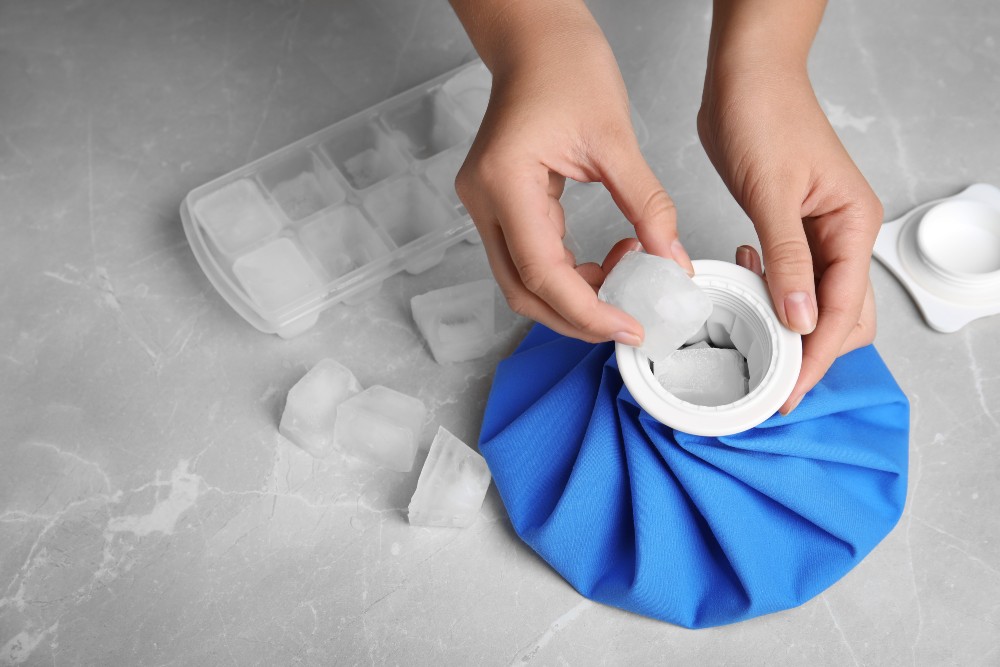5 Tips for Easing Ingrown Toenail Pain
Ingrown toenails are not only unsightly in open-toed shoes, but they can also be extremely painful. The good news is that you don’t need to suffer. As podiatrists, we’re happy to share some of our trade secrets with you.
An ingrown toenail is a very common issue that happens when the toenails have grown into the surrounding flesh. This results usually in a lot of pain, redness, swelling, and if you’re unlucky, an infection in your toe.
The good news is that there are some things you can do right now to try and fix your ingrown toenails. Here are our top five tips to help ease the pain right now.
1. Warm Water Soaks for Ingrown Toenail Pain
Soaking your toes in warm water helps soothe them and can reduce swelling and thus take the pressure off your toenail and skin. Try soaking your toes three to four times a day for about 15 minutes. Your feet should start feeling better quickly.
Try adding Epsom salts to make your warm water soaks work even more efficiently because it can help prevent infection in the ingrown toenails. You can also help by massaging your toes gently to disperse fluid that has built up in your tissues, relieving pain even further.
2. Lifting and Supporting the Ingrown Toenail
Once you’ve soaked your nails, try to lift them gently around the front edge of the nail working toward the corners. Start by disinfecting dental floss or a simple piece of cotton and then nudging it under your nail.
The goal is to keep encouraging the nail to lift up and grow a little straighter. Nails are softer when they are damp and more pliable, so this is the best time to encourage straighter growth. It’s important to be gentle to avoid causing any other injuries in the process. If this is too painful, it’s time to contact our office for an evaluation as you might have an infection.
3. Using an Antibiotic Cream
Is the skin around your nail looking red and swollen? Perhaps it also feels sensitive to the touch. In that case, you may be heading for an infection. Dabbing the area with antibiotic cream can help prevent bacteria from entering through a small cut and turning into a bigger infection. With the right ointment, preventing infection is easy and fast.
If you can stand it, put on antibiotic cream and then wrap the ingrown toenail to help seal in the ointment and allow it to work even harder to fight against any infections forming. This will also prevent any dirt or bacteria from getting into the ingrown toenail. Make sure to regularly change out the dressing and reapply ointment until the ingrown toenail has cleared up.
4. Trying Different Pain Relief Methods
If your ingrown toenails continue to be uncomfortable or downright painful, try different methods of pain relief. Ice packs or ice cubes wrapped in a cloth work well and can be very effective at taking the pain away. They may also reduce swelling.
If ice isn’t enough to relieve pain, consider taking an over-the-counter painkiller. Ibuprofen or acetaminophen works well for most people and can alleviate more severe pain. However, if the pain will not go away, then contact our office for treatment.
5. Wearing Different Shoes
If the weather is warm enough, wear sandals. Open-toed shoes relieve any pressure against your nails. If you need to wear shoes or boots, make sure they fit correctly. Make sure they have enough room in the toe box that your toes are free to move around and not be bunched together.
Tight-fitting shoes may look beautiful, but they can be the underlying cause behind your ingrown toenails. If you continue wearing them, they will keep pressure on the injured nail and may make it worse.
Once your nail has healed, check your shoes to see whether some of them rub or irritate the skin. If they do, they might have been the cause of the ingrown toenail in the first place. Replace those as soon as you can.
When You Need to Come to Our Clinic for an Ingrown Toenail
Following these tips should have you back on your feet and walking comfortably in no time. However, if your ingrown toenails are not improving within a few days, it’s time to look for professional help. If you also happen to have diabetes or another condition that impairs the ability to feel your feet, you need to be seen by a podiatrist to prevent a major complication.
If the ingrown toenails become infected, you need to be treated by a medical professional. Our podiatrists have years of experience treating ingrown toenails and will answer any questions you might have. Southern California Foot & Ankle Specialists in Ladera Ranch, CA is just a phone call away at (949) 364-9255 (WALK), or you can request an appointment right now on our website. Let our amazing team of foot and ankle care specialists help you get rid of the pain of your ingrown toenails!

